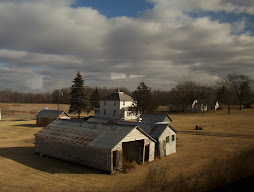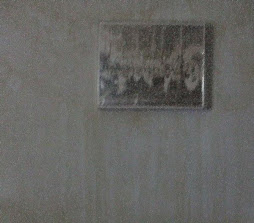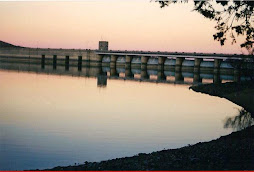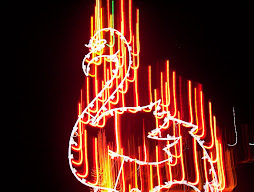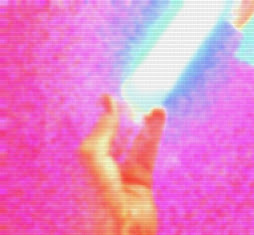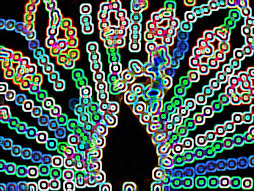skip to main |
skip to sidebar
Fukushima 50 criticise Japanese government over inconsistent documentation of their radiation exposure
Tokyo, Apr 23 : The Fukushima 50 emergency nuclear plant workers trying to control the situation in the earthquake-cum-tsunami hit plant in Japan, have reportedly accused the government of inconsistent handling of data in relation to radiation exposure.
The Fukushima Daiichi nuclear plant workers have said that they have been risking their health, while attempting to regain control over the facility that was severely damaged by the March 11 tsunami.
..
The paper quoted another nuclear industry source as saying that: "If the radiation data is handled vaguely, workers may not be able to have proof of their exposure to radiation if they need to fight court battles."
Fukushima operator allowed excessive pressure: report
WASHINGTON, USA - The operator of Japan's nuclear plant let pressure in one reactor climb far beyond the level the facility was designed to withstand, which may have worsened the nuclear accident, The Wall Street Journal reported late Friday.
Citing results of its own inquiry, the newspaper said that Japanese rules call for waiting much longer venting the potentially dangerous steam that builds up as reactors overheat.
Following the quake, the pressure inside the vessel that forms a protective bulb around the reactor's core reached twice the level it was designed to withstand, the Journal said.
Then it took 12 hours later to vent the steam, and then, one hour later, the reactor blew up.
Sea leaks would be rated Level 5 or 6
If estimates of leaks of radioactive material into the sea from Tokyo Electric Power Co.'s stricken Fukushima No. 1 nuclear power plant were judged according to the International Nuclear Event Scale, the severity of marine contamination would be rated Level 5 or 6.
The Three Mile Island nuclear accident in the United States was rated Level 5 on the scale introduced by the International Atomic Energy Agency that runs from zero to seven and is based on radiation leaks into the atmosphere.
The radiation leaks into the sea have caused serious contamination of the marine environment, TEPCO's estimates show. Water that leaked into the Pacific Ocean from the No. 2 reactor's water intake contained an estimated 4,700 terabecquerels of radioactive substances, TEPCO announced Thursday.
Reactor 1 water level concerns Via Rense. Excerpts:
The Japanese government has expressed concern about the structural strength of the Fukushima Dai-ichi nuclear power plant's Number 1 reactor. It says the ongoing water injections may be making the vessel less earthquake resistant.
Tokyo Electric Power Company, or TEPCO, is planning to fill part of the containment vessel with water to cool the reactor.
..
TEPCO says the water accumulation will not compromise the structure. But the Nuclear and Industrial Safety Agency says large amounts of water can make the building less earthquake-proof.
After 5 Halflives, I-131 Higher than Cs-134/137 Suggests Ongoing Criticalities
Summary
During full-power operation, numerous "fission products" are in approximate steady-state equilibrium, meaning roughly equal becquerel of I-131 and Cs-134, with a slow buildup of Cs-137. But they all cease to be created when the reactors are scrammed. Japanese regulators NISA and MEXT seem oblivious of the mysterious fact that I-131 Bq "reactor density" is still often reported double the Cs-134/137 Bq. The TEPCO data suggest that fission is ongoing despite the reactor shutdowns. This is bad news.
And:
The fact that nobody in Japan seems to know basics of reactor accident progression that I learned at Sandia Labs in early 1980s is truly scary, because it suggests they are playing with these broken/leaking reactors and SNF pools inside at least three buildings totally destroyed by steam explosions ... as if the reactors and their SNF pools are broken toys that they're using trial and error to try fixing.
Desperate emails speak of 'genocide' as doctors who have treated injured protesters are rounded up. Klassy with a K. Excerpts:
The intimidation and detention of doctors treating dying and injured pro-democracy protesters in Bahrain is revealed today in a series of chilling emails obtained by The Independent.
At least 32 doctors, including surgeons, physicians, paediatricians and obstetricians, have been arrested and detained by Bahrain's police in the last month in a campaign of intimidation that runs directly counter to the Geneva Convention guaranteeing medical care to people wounded in conflict. Doctors around the world have expressed their shock and outrage.
And:
"Interrogation committees question me about our role in treating the injured protesters, who are considered now criminal for protesting against the government," he said, shortly before being detained. "We said we were there to treat patients and have nothing to do with politics.
"I don't have good feeling about things going on in Bahrain. So many of our consultant surgeon and physician colleagues been arrested at pre-dawn raids and disappear."
..
There followed a long silence before he wrote again: "Three weeks of hell. The military took control of the Salmaniya Hospital, doctors, nurses, paramedics and patients treated as suspects by soldiers and policemen. Daily interrogation and detention to some of our colleges." He added: "Very much intimidated and frighten."
And, sad to say this is nothing new. Richard Sollom: The shocking thing is that Bahrain abuse is systematic.
In two decades of conducting human rights investigations in more than 20 countries, I have never seen such widespread and systematic violations of medical neutrality as I did in Bahrain.
Bahrain's ambulances, hospitals and medical clinics as well as its physicians, nurses, and medical staff are all being targeted. It's pervasive and ongoing. These attacks violate the principle of medical neutrality and are grave breaches of international law.
..
While in Bahrain, we documented evidence of the hospital administration at Salmaniya calling doctors and nurses in for appointments, from which they were never seen again. Presumably they are taken to places of detention. One notable detention centre, Criminal Investigations Directorate at Adliya, is also an infamous centre of torture.
Unfortunately, the doctors do not have to be taken to detention centres to suffer violent attacks. We have documented the story of six doctors beaten by security forces in a Salmaniya staff room. When security forces are capable of such brutality in a hospital, one can only imagine what happens in a detention centre.
I'm sure Iran has taken note of this situation, among others. They seem upset.. This proxy-crisis feels like it will escalate very soon.
Residents Scramble as Japan Seals Area Near Plant Excerpts:
Japan sealed off a wide area around a radiation-spewing nuclear power plant on Friday to prevent tens of thousands of residents from sneaking back to the homes they quickly evacuated, some with little more than a credit card and the clothes on their backs.
Fearing they might not see their homes again for months, evacuees raced into the deserted towns Thursday before the ban took effect to grab whatever belongings they could cram into their cars.
Nearly 80,000 people were hurriedly evacuated from a 12-mile zone around the Fukushima Dai-ichi plant on March 12, after an earthquake and a tsunami destroyed its power and cooling systems. The order had no teeth, however, and people began increasingly returning to check on the remains of their lives. Some had stayed all along.
..
Under a special nuclear emergency law, people who enter the zone will now be subject to fines of up to $1,200 or possible detention for up to 30 days. Until now, defiance of the evacuation order was not punishable and the police manning the roadblocks had no authority to stop people from entering.
Japan earmarks first $50 bn for post-quake rebuild
TOKYO: Japan's cabinet approved on Friday almost $50 billion of spending for post-earthquake rebuilding, a down payment on the country's biggest public works effort in six decades.
The emergency budget of 4 trillion yen ($48.5 billion), which is likely be followed by more reconstruction spending packages, is still dwarfed by the overall cost of damages caused by the March 11 earthquake and tsunami, estimated at $300 billion.
"With this budget, we are taking one step forward towards reconstruction ... and towards restarting the economy," Finance Minister Yoshihiko Noda told reporters after a cabinet meeting.
..
Though Japan's debt is around twice the size of its $5 trillion economy, it does not face a Greece-style debt crisis since most of that debt is owed to domestic creditors rather than foreign banks.
Radioactive water likely to hamper cooling effort. Via Rense.
The operator of the Fukushima nuclear power facility plans to cool the reactors by filling their vessels with water. However, that process may be hampered by waste water contaminated with highly radioactive materials.
According Tokyo Electric Power Company's blueprint for bringing the troubled facility under control, the Number 1 and 3 reactor vessels will be filled with water up to the height of the nuclear fuel rods by the middle of July. This is aimed at cooling the reactors in a stable manner.
And:
The utility needs to check the reactor turbine building for any water leakage from the building housing the reactor, but workers cannot enter the reactor building at present. However (No, not "However." The word they were looking for is "Also"), the effort to identify the source of a leak is difficult because of radioactive water inside the basement of the turbine building.
Work to move contaminated water from the Number 2 reactor is already underway. However, it's not clear when they can begin moving contaminated water from the Number 1 reactor.
Four More Quakes Hit East Coast Of Japan, Vicinity Of Fukushima
Radioactive iodine found in breast milk of Japanese mothers. Via Rense. Excerpts:
The breast milk of four Japanese mothers has been found to contain small quantities of radioactive iodine.
The government faced calls for a full investigation into the impact of the nuclear disaster on mothers and babies following the discovery.
The radiation contamination came to light after tests were conducted on breast milk samples taken from nine women living northeast or east of Tokyo.
Four of these women were found to be contaminated, with the highest reading of 36.3 becquerels of radioactive iodine per kg detected in the milk of the mother of an eight-month-old baby in Kashiwa, Chiba prefecture.
..
However, the breast milk readings were below the safety limit of 100 becquerels per kg of tap water consumption by infants under one year of age and no radioactive cesium was found. (Would there be different standards for tap water and breast milk? I would assume the fat contained in breast milk would warrant a lower threshold of exposure, but that's just me guessing..)
Leading Epidemiologist: Instead of Trying to Avoid Japanese Radiation, Put Your Energy Into Demanding a Saner Energy Policy Great read from Washington's Blog.
Core of Stricken Reactor Probably Leaked, U.S. Says This is Reactor 2 Excerpts:.
WASHINGTON — The United States Nuclear Regulatory Commission said Wednesday that some of the core of a stricken Japanese reactor had probably leaked from its steel pressure vessel into the bottom of the containment structure, implying that the damage was even worse than previously thought.
The Nuclear Regulatory Commission’s statement regarded unit No. 2, and the agency underscored that its interpretation was speculative and based on high radiation readings that Tokyo Electric had found in the lower part of unit No. 2’s primary containment structure, called the drywell. The statement said that the commission “does not believe that the reactor vessel has given way, and we do believe practically all of the core remains in the vessel.”
The agency’s statement was issued after Representative Edward J. Markey, Democrat of Massachusetts, told a House hearing on Wednesday morning that the commission had told him that the core had melted through the vessel.
TEPCO official describes possible meltdown at No. 1 reactor: The “molten fuel accumulates like lava” From Energy News.
Kyodo reported that on Wednesday a TEPCO official admitted the fuel in reactor No. 1 “could be melting.”
TEPCO official Junichi Matsumoto described the “possible meltdown”, comparing it to “a state in which molten fuel accumulates like lava.”
Was JFK killed because of his interest in aliens? Secret memo shows president demanded UFO files 10 days before death From The Daily Mail via Godlike Productions.. Excerpts:
An uncovered letter written by John F Kennedy to the head of the CIA shows that the president demanded to be shown highly confidential documents about UFOs 10 days before his assassination.
The secret memo is one of two letters written by JFK asking for information about the paranormal on November 12 1963, which have been released by the CIA for the first time.
The president’s interest in UFOs shortly before his death is likely to fuel conspiracy theories about his assassination, according to AOL News.
Alien researchers say the latest documents, released to Mr Lester by the CIA, add weight to the suggestion that the president could have been shot to stop him discovering the truth about UFOs.
..
..Conspiracy theorists said the documents add interest to a disputed file, nicknamed the ‘burned memo’, which a UFO investigator claims he received in the 1990s.
The document, which has scorch marks, is claimed to have been posted to UFO hunter Timothy Cooper in 1999 by an unknown CIA leak, but has never been verified.
In a note sent with the document, the apparent leaker said he worked for CIA between 1960 and 1974 and pulled the memo from a fire when the agency was burning some of its most sensitive files.
The undated memo contains a reference to ‘Lancer’, which was JFK's Secret Service code name.
On the first page, the director of Central Intelligence wrote: ‘As you must know, Lancer has made some inquiries regarding our activities, which we cannot allow.
‘Please submit your views no later than October. Your action to this matter is critical to the continuance of the group.’
..
UFO investigator Robert Wood said he has tested the paper it was printed on, the ink age, watermarks, font types and other markings.
He said: ‘I hired a forensics company to check the age of the ink and check several other things that you can date, using the same techniques you’d use in a court of law.’
The article never emphatically states what those results are, though, but I'm assuming they checked out.
$44.38 at 2:54 a.m. Central Standard. Kitco chart found at Urban Survival.
Vídeo: Silver $50 in 2011 says John Embry,COMEX silver,Adrian Douglas & Webbots prediction.
Why Silver will continue to gain value in the near and far term. Video interview.
Gold Exceeds $1,500 as Dollar Drops on Concern About U.S., European Debts Stilted towards Gold, but Silver's there..
Gold for immediate delivery climbed as much as 0.3 percent to $1,500.43 an ounce before trading at $1,498.95 an ounce at 12:39 p.m. in Singapore. Bullion for June delivery in New York rose 0.4 percent to $1,500.90 an ounce. Silver reached the highest level in 31 years.
“The trigger for gold’s recent surge was the S&P downgrading of the U.S. credit rating,” said Gavin Wendt, founding director with MineLife Pty. Coupled with the debt turmoil in Europe and violence in the Middle East, “it’s a perfect storm for precious metals, including gold and silver.”
World Exclusive Photos: Inside Fukushima (Dead Zone) Via Rense.
Takashi Morizumi is a veteran Japanese photojournalist who has documented the hibakusha, or radiation victims, at nearly every nuclear disaster site around the world, including Hiroshima, Nagasaki, the former Soviet test site at Semipalatinsk, Ground Zero in Nevada, Bikini Island and Chernobyl in Ukraine.
The radiation levels around the partially melted-down Fukushima 1 nuclear plant are the worst he's ever experienced.
TEPCO Checking Seabed For Plutonium, Says There's Little Doubt It Has Leaked Since March 11 (Video) Via Rense.
Quake relief tax hike Excerpts:
Japanese consumers may have to help foot the reconstruction bill after last month's earthquake and tsunami caused $300 billion of damage, further burdening the hugely indebted economy, a newspaper said on Tuesday. It would be the first increase since 1997, though a sales tax hike had been the subject of fierce political debate before the earthquake struck as one way for Japan to dig itself out of its massive debt.
The government is considering raising the tax by 3 percentage points to 8 percent when the new fiscal year starts next April, the Yomiuri newspaper reported.
Japan To Set Up Committee To Oversee Tokyo Electric Power
The Japanese government will set up a committee to oversee Tokyo Electric Power Co., to strengthen its involvement in the reconstruction of the company and work to determine procedures for compensation payments to those affected by the crisis.
..
"The compensation from the Fukushima No. 1 nuclear power plant crisis is likely to reach trillions of yen. Depending on the amount of compensation, the company may face serious financial problems," the sources said.
..
The government and the company will decide how to share the costs and responsibilities before starting a full investigation into Tokyo Electric Power's financial conditions.
It's nice of them to pretend, but TEPCO's pretty much dead already.
Toyota making drastic production cuts after Japan quake, tsunami
Toyota has announced drastic production cuts in North America and China due to difficulty in supplying parts following the massive earthquake and tsunami in Japan.
Previously, Toyota Motor Engineering and Manufacturing North America, Inc. (TEMA), had said it would suspend production on Mondays and Fridays between April 15 and April 25. That will continue through June 3, the company said in a statement.
"During the same period, production will run at 50% on Tuesday, Wednesday and Thursday," the statement said.
..
Toyota employs 25,000 workers in North America. It operates nine plants in the United States in Kentucky, Indiana, Texas, Tennessee, Alabama, West Virginia, California and Mississippi. It also operates three plants in Canada and one in Mexico.
Japan´s March trade surplus plunges after tsunami
TOKYO: Japan's trade surplus plunged 78.9 percent in March from a year earlier as exports fell after a March 11 earthquake and tsunami which triggered a nuclear crisis, the finance ministry said Wednesday.
The surplus reached 196.5 billion yen (2.37 billion dollars), still managing to stay in the black for the second straight month, the ministry said.
Exports fell 2.2 percent to 5.87 trillion yen (70.9 billion dollars), falling for the first time in 16 months due to reduced shipments of automobiles and vessels, it said.
..
The fall was led by vehicle exports, which fell 27.8 percent. Exports of ships dropped 10.0 percent, and electronics parts fell 6.9 percent, the ministry said.
Japan mulls limited access to zone near nuke plant
Authorities were considering restricting access to the evacuation zone around Japan's crippled nuclear plant Wednesday to limit radiation exposure to residents who may want to return to their homes.
"We are considering setting up 'caution areas' as an option for effectively limiting entry" to the zone, Chief Cabinet Secretary Yukio Edano said.
It was unclear when the ban might be imposed.
About 70,000-80,000 people were living in the 10 towns and villages within 12 miles (20 kilometers) of the Fukushima Dai-ichi plant, which has been leaking radiation after a March 11 earthquake and tsunami wrecked its power and cooling systems.
LUCIFER'S DESTINY Royal Wedding, Birthquakes & Resurrection
It's one thing to notice bits and pieces of "meaningful coincidences" in life. It's harmless. Numerology? Cute. Symbolism? Entertaining. Maybe even inspiring. But when it gets to the point of super interchontextual coherence - which is what I highlight and demonstrate on this website - it apparently gets a little discombobulating and even "scary" for many. The ordinary mind tries to find a way to squash it, so that order is restored, no need to radically revise one's view of the world. To accept it is to reject a fundamental bedrock of one's practical but incomplete understanding of reality. That would be like experiencing a catastrophic earthquake and then having to rebuild a city. It's a tall order. It takes great effort and commitment. Something we don't normally look forward to.
So I understand the psychological effects. It can be an instant crossroads in that the mind has to make a big decision concerning the nature of reality itself. Consciously or unconsciously this pressure is felt and it makes many uncomfortable. But such is the nature of truth. Truth, more often than not, becomes inconvenience. You either decide to accept it or deny it. Life is a series of these decisions. You keep denying and it takes its toll. There is you, there is truth, and in between is time.
You'll need an entire pot of coffee for this one. And you'll need to re-read, several times maybe. And soon, you'll begin to see things just a little bit differently..
Alarming New Fukushima Reports Excerpts:
Five weeks after Japan's disaster, reports suggest worse, not improved conditions. It portends serious regional and global trouble ahead, besides what's already happened.
..a 5.9 level aftershock.. (hit).. the country early Saturday. So far, no additional damage reports were issued. However, seawater radioactive Iodine-131 spiked to 6,500 times above normal, up from 1,100 times Friday, and Cesium-134 and 137 rose nearly fourfold.
Japan's Nuclear and Industrial Safety Agency (NISA) raised the possibility of worrisome new leaks, admitting that tracking them is difficult. Nonetheless, they still claim no threat to humans or sea life despite numerous independent experts raising dire warnings of spreading global radiation, including plutonium, the most deadly substance known, a microscopic speck enough to cause cancer.
And:
On April 11, environmental expert Dr. Ilya Perlingieri's article headlined, "Fukushima's Nuclear Disaster: One Month and Counting," saying:
So far, "(n)othing is even remotely improved. In fact, things are dramatically worse." Hazardous reactors like GE's Mark 1 place entire populations at risk where they operate. "The radioactive consequences of" four Fukushima reactors "far exceed(s) Chernobyl."
As a result, the consequences for all Japanese residents will be enormous. But they also affect others as "various radioactive elements travel (by wind and water) around the globe." Potentially, everyone may be affected to a greater or lesser extent, including future generations.
In addition, dumping thousands of tons of radioactive water into the ocean is an environmental crime. Contaminated water "will now travel across the (Pacific) to North America's West Coast," contaminating the entire food chain in the process.
Then, as "water goes through its cycles, it will evaporate, and radioactive air will be carried around the globe. We are all in grave danger."
Nuclear Overseers Are "Fake" Agencies Funded and Controlled by the Nuclear Power Industry
New video from Arnie Gundersen: Gundersen Discusses Current Condition of Reactors, TEPCO Claim of "No Fission" in Fuel Pool, and Lack of Radiation Monitoring in fish.
Nuke plant workers pump out toxic water Excerpts:
Workers at the quake-hit Fukushima nuclear plant in Japan are removing highly radioactive water from a reactor turbine building, a key step towards restoring cooling systems, the government said.
About 10,000 tonnes of highly radioactive water will be transferred from the turbine building of reactor No. 2 to a treatment facility inside the plant for processing, Japan's Nuclear and Industrial Safety Agency (NISA) said. (This is the troubled reactor Gundersen just told you about, providing you watched the video..)
Robots find radiation too high for humans Excerpts:
Robots deployed inside two reactors at the Japanese nuclear plant overrun by last month's tsunami have detected radiation levels too high for workers to enter, posing challenges for a new plan to bring the ravaged complex under control by year's end.
Workers have not been able to enter four of the reactors at the Fukushima Daiichi Nuclear Power Plant since the days immediately after the earthquake and tsunami March 11. Vital plant cooling systems were knocked out, setting off hydrogen explosions at four of the plant's six reactors that blew off their roofs and littered the site with radioactive debris.
At Unit 1, robots detected radiation of as much as 49 millisieverts per hour, while at Unit 3, the reading was 57 millisieverts per hour. But in recent weeks, far higher readings have come from areas where contaminated water has accumulated, such as the turbine building at Unit 2, where experts say the reactor pressure vessel may be cracked and leaking nuclear material.
Japan automakers' supply chain crisis may 'last months': analysts Read: Many months.. Excerpts:
TOKYO--A component supply crisis that has strangled auto production in Japan and enforced a slowdown overseas in the wake of the March 11 disasters will last several months, analysts say.
..
Power shortages have hit production across all industries and threaten to throw an export-driven economy into a tailspin, analysts say, amid fears the crisis could speed up a shift of production out of Japan already encouraged by the strong yen.
For automakers the world over, the impact has been acute with companies from Toyota to Ford shuttering plants as far away as Britain, the United States, Turkey, France, Australia, Poland and the Philippines amid a supply shock.
“The problem will last for several months and could even last for a year,” said Tatsuya Mizuno, an auto industry analyst with Mizuno Credit Advisory in Tokyo.
“The supply chain for automakers was seriously damaged. (Japanese firms) have around one month of inventories, but some suppliers have suffered so much it is very unlikely that they will be able to restart full production soon.”
True Finns set for government, see EU bailout changes
The True Finns, the anti-euro party voted into a powerful role in the Helsinki parliament at the weekend, expect the European Union to change plans for a bailout of Portugal, its leader said on Monday.
..
"This is a big, big bang in Finnish politics. This is a big, big change. This will change the content of Finnish politics," Jan Sundberg, professor at the University of Helsinki, said.
Finland's parliament, unlike others in the euro zone, has the right to vote on EU requests for bailout funds, meaning it could hold up costly plans to shore up Portugal and bring stability to debt markets.
The strong showing for the populist True Finns reflects growing public frustration in some EU states about footing the bill for weaker economies such as Greece, Ireland and Portugal.
Portugal's bailout threatened by veto from Finland
The next phase of Portugal's bailout negotiations start today, but already face trouble from an unlikely source - a strong election performance from an anti-euro party in Finland, which has pledged to vote against financial aid.
Ireland’s banks downgraded to junk status From Business ETC. Excerpts:
IRELAND’S GOVERNMENT BACKED banks are now officially junk following a downgrading of the long-term deposit ratings of the four surviving banks by the ratings agency Moody’s.
The decision to downgrade Bank of Ireland (BoI), Allied Irish Banks (AIB), EBS Building Society and Irish Life & Permanent (IL&P) follows the move to cut Ireland’s own ratings status to one level above junk status last week.
Debt restructuring on Greece's path
The International Monetary fund's opinion is that a Greek debt restructuring is inescapable at this point and will have to take place by next year. This does not mean private bond holders will receive haircuts, but rather the global financial organization sees rescheduling loan repayments as a form of restructuring.
After a tense week that saw EU officials giving in, for the first time, and admitting that Greece might be forced to restructure its debt, Ireland's sovereign debt downgraded yet again by Moody's and Portugal's bailout put in check, the weekend wasn't better. Restructuring fears grew on reports that top IMf officials were convinced Greece would be unable to service its debt.
The Greek debt to GDP ratio is over 10% and accumulated debt will be 160% of GDP by 2013, coupled with a contracting economy and soaring borrowing costs make escaping restructuring a severely uphill road.
And:
The Greek situation is bound to be a handful for the European Union, one they will not be able to put all their strength into. Finland's right-wing party True Finns became the third political force in the Nordic country after Sunday's elections. The re-shaped parliament in that country has the right to decide on Finland's position in terms of a bailout for another European country. True Finns are set against paying for Portugal and could block the much needed aid.
And the Greeks begin to riot again. As a country, they really do own their anger..
Global Banks Face 'Wall Of Maturing Debt' Awesome. Excerpts:
DEBT-LADEN banks are the biggest threat to global financial stability and they must refinance a $US3.6 trillion ($3.4 trillion) ''wall of maturing debt'' that becomes due in the next two years, the International Monetary Fund says.
With the $3.6 trillion that matures in two years the rollover requirements are most acute for Irish and German banks, the report said.
''These bank funding needs coincide with higher sovereign refinancing requirements, heightening competition for scarce funding resources.''
Fukushima - Reading Between The Lines From Rense. Excerpts:
That's the politically correct way of saying they are dumping radioactive water into the ocean. Silt fences don't stop water. Water seeks it's own level. SEA level.
In addition, they got an increased pressure reading in one of the cores and began injecting nitrogen to prevent a hydrogen explosion - but that won't control the pressure and it will eventually vent to the atmosphere or to the water table. Unless, of course, the hydrogen blows up - which is the same thing - it will vent to atmospheric pressure. So that is busy-work as well. They want to be able to say, and ARE SAYING "We are doing our best, and cleaning up an old accident. No more earthquakes will occur, so neither this plant, which is hanging on by it's fingernails, nor any OTHER bland on the affected coastline are in any danger. Go about your business."
That belief is irrational. But worse, it isn't true.
Fresh leak fears as Japan rocked by ANOTHER earthquake From The Mirror, via Rense. Excerpts:
RADIATION levels around Japan’s stricken nuclear plant soared after another earthquake jolted the country yesterday.
Levels of radioactivity rose sharply in seawater near the plant. It happened shortly after the Tokyo Electric Power Company had beefed up safety systems. TEPCO has been fighting leaks at the plant since it was crippled by a tsunami on March 11.
Workers cannot approach reactor buildings NHK, via Rense. Excerpts:
At the Fukushima Daiichi nuclear plant, high levels of radiation have kept workers from approaching the buildings housing the first 3 reactors, which lost their cooling functions in the March 11th earthquake and tsunami.
On Friday, the highest radiation level measured outside the double-entry doors of the Number 1 to 3 reactor buildings was 2 to 4 millisieverts per hour.
Radiation levels measured between the double doors of those reactor buildings was 270 millisieverts in the Number One reactor, 12 in Number 2, and 10 in Number 3.
The radiation level detected at the Number One reactor exceeds the national exposure limit of 250 millisieverts for nuclear contract workers.
Special Report: The nuclear industry's trillion dollar question
Before Fukushima, more than 300 nuclear reactors were planned or proposed worldwide, the vast majority of them in fast-growing developing economies. While parts of the developed world might now freeze or even reduce their reliance on nuclear, emerging markets such as China, India, the Middle East and Eastern Europe will continue their nuclear drive.
But with fewer plants to bid on, the competition for new projects is likely to grow even fiercer -- and more complicated. Will concern about safety benefit Western reactor builders, or will cheaper suppliers in Russia and South Korea hold their own? And what if the crisis at Fukushima drags on as appears likely? Could it still trigger the start of another ice age for nuclear power, like Chernobyl did in 1986? Or will it be a bump, a temporary dip in an upward growth curve?
Japanese unhappy with government crisis response - poll
A majority of people in Japan disapprove of the government's handling of the nuclear crisis at the crippled Fukushima plant, opinion polls suggest.
Japan to announce time of completion for nuke emergency
Chief Cabinet Secretary Yukio Edano said while meeting with Fukushima Governor Yuhei Sato that the government would give an estimate in the next few days of when the nuclear emergency will be contained, the Kyodo News reports.
Considering the pattern of deception, obfuscation, and general incompetence surrounding everything TEPCO does, why even bother with an estimate? No One Believes Your Corporation.
Japan’s TEPCO plans 'shutdown' in 6-9 months What did I just say about estimates?
TEPCO's chairman Tsunehisa Katsumata said at a press conference that the utility aims to cool reactors and start reducing radiation from the explosion-charred facilities within three months.
Within six to nine months, TEPCO said in a statement, it expects to achieve "cold shutdowns" of all the six reactors, a stable condition in which temperatures drop and radiation leaks fall dramatically.
"As the short-term targets, we have set two steps," said Katsumata. "Step one is to steadily reduce the amount of radiation.”
"In step two, we aim to control the release of radioactive substances and greatly control the amount of radiation."
Robots to gauge radiation in Japan's quake-hit plant
The operator of Japan's stricken nuclear plant said Sunday it will send two remote-controlled robots into a reactor building damaged by a hydrogen explosion to gauge radiation and temperature levels.
A spokesman for the Tokyo Electric Power Co. (TEPCO) said the two American-made robots would enter the reactor three building on Sunday to check radiation, temperature, humidity and oxygen levels.
Radiation from the overheating reactors has made its way into the air, land and sea, leading the government to impose exclusion zones around the plant in Fukushima prefecture and damaging local fishing and farming industries.
Japan, US Announce Partnership to Rebuild Region Hit by Quake, Tsunami
Japan and the United States have agreed to create a public-private partnership, under Tokyo's guidance, to help rebuild communities devastated by last month's magnitude 9.0 earthquake and resulting tsunami.
Hmm.
Radioactivity in sea rises again
Levels of radioactivity have risen sharply in seawater near a tsunami crippled nuclear plant in northern Japan, signaling the possibility of new leaks at the facility, the government said Saturday.
The announcement came after a magnitude-5.9 earthquake jolted Japan on Saturday morning, hours after the country’s nuclear safety agency ordered plant operators to beef up their quake preparedness systems to prevent a recurrence of the nuclear crisis.
..
But the government said Saturday that radioactivity in the seawater has risen again in recent days. The level of radioactive iodine-131 spiked to 6,500 times the legal limit, according to samples taken Friday, up from 1,100 times the limit in samples taken the day before. Levels of cesium-134 and cesium-137 rose nearly fourfold. The increased levels are still far below those recorded earlier this month before the initial leak was plugged.










































